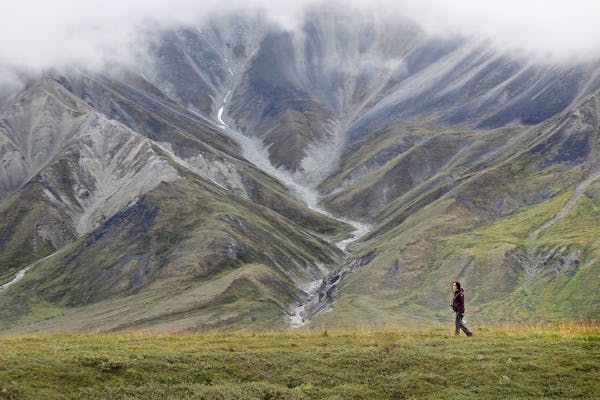Denali National Park and Preserve in Alaska covers more than 6 million acres, roughly the size of Vermont. To see its wild beauty, visitors rely on the 92-mile Denali Park Road. Private vehicles are allowed on the first 15 miles, culminating at the Savage River Trailhead; free bus service is available on this stretch. To explore more deeply, visitors take a bus. Transit buses are designed for those who want to spend time hiking or camping; riders can hop on or off at various stops; cost ranges from $31.25 to $60 for the full 92 miles and is free for ages 15 and younger. Tour buses offer narrated drives that make brief stops but require riders to complete the trip on the bus; costs for adults riders start at $80, and for ages 15 and younger, $40. Reservations are recommended (1-800-622-7275 or click on "How to explore Denali" at nps.gov/dena). Plan to spend at least two days in the park if you want to explore a few of my five favorite bus stops:
Mile 15: The 1.7-mile trail at Savage River takes about an hour to finish, with only minor ups and downs. The trail runs along either side of Savage River; a bridge crossing provides an adrenaline rush when water is gushing. Despite the area's relatively low elevation, the peak of Denali can be seen on a clear day. Dall sheep can be seen on hills; ptarmigans, grouse-like birds, hide in bushes on the flood plains.
Mile 46: Polychrome Overlook, at 3,695 feet, looks down on the East Fork River, where streams from the glacier valleys merge. But a more stunning geological reality gave the place its name: Volcanic material in the bedrock seems to radiate in stripes of brown. Beyond the Polychrome Mountain, glaciers cover the mountain peaks of the Alaska Range. Trails from the lookout area will take hikers up for a panorama of the valley.
Mile 53: The Toklat River is more than just a 20-minute rest stop after a long ride from the entrance. The gravel bar is so wide that trying to cross from one side to the other takes at least a half an hour when water is low. Jagged peaks on both sides of the river vie for attention with wolves, bears, caribou and other wildlife roaming the lush green forest and tundra that stretch out before high peaks. Get your camera ready.
Mile 66: Eielson Visitor Center — reached after hours on the bus — is one of the most popular spots for visitors. Rangers guide walks here daily, but great trails on the bluffs invite hikers to strike out on their own, or even take it off-trail. The visitor center has a 3-D model of Denali Park Road and the Alaska Range, informative wildlife exhibits and movies. Best of all, because of its high elevation, the chance of seeing Mount Denali and other Alaska Range giants is better than at many other places in the park. Lockers are available so hikers can lighten their backpacks before setting off.
Mile 85: Wonder Lake brings visitors within 26½ miles of Denali. When conditions allow, the mountain can be seen directly from the campground; day trippers must walk a quarter-mile toward the campground for a better view. Warning: Mosquitoes swarm this rainy, low-lying valley in summer, so bring a mosquito head net. Hiking off-trail is allowed, so you can walk on the spongelike tundra with its deep moss and low-lying bushes like wild blueberries. If time allows, ride the bus to the last stop, the former gold mining town of Kantishna, to complete the 92-mile journey.
Lewis Leung

Minnesota and other Democratic-led states lead pushback on censorship. They're banning the book ban

